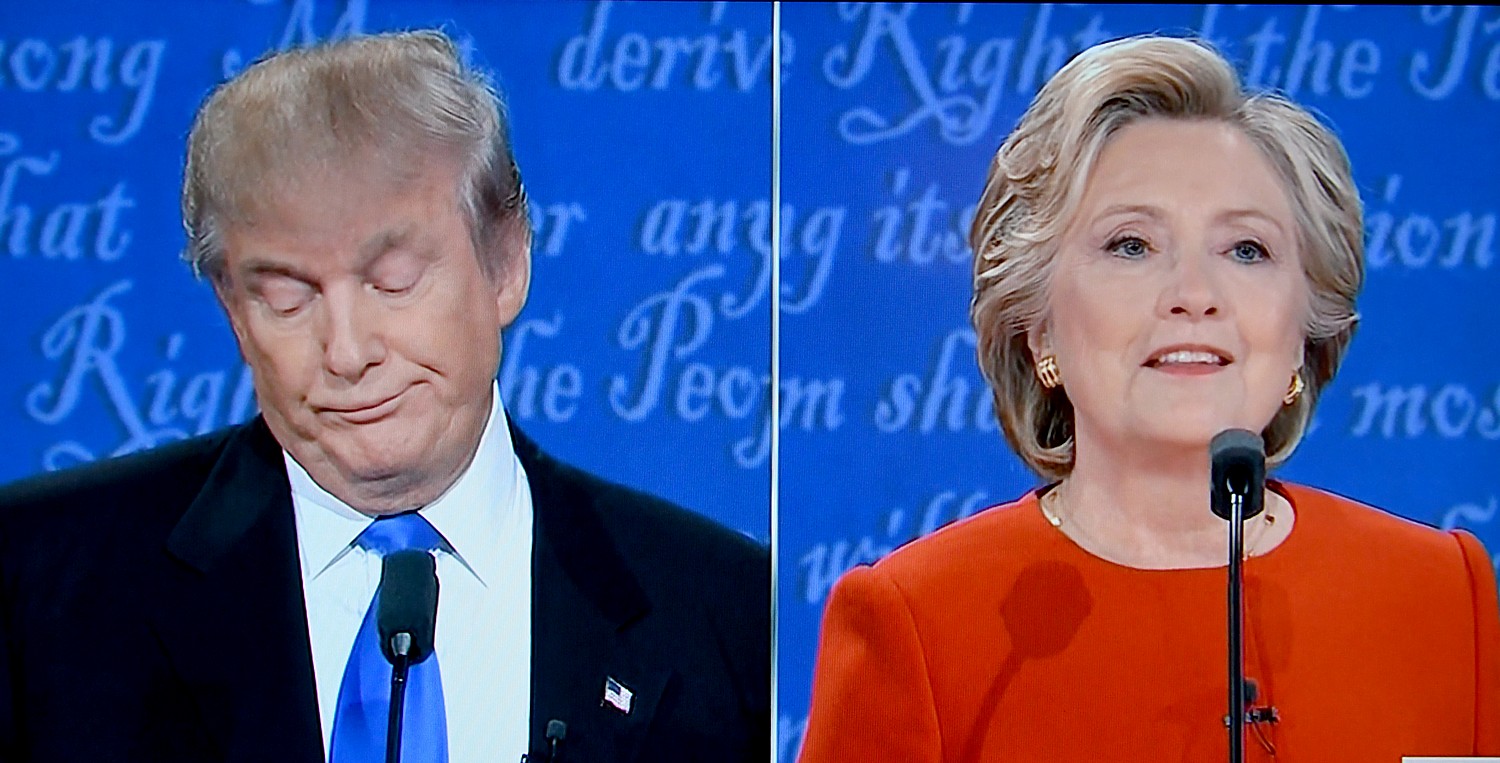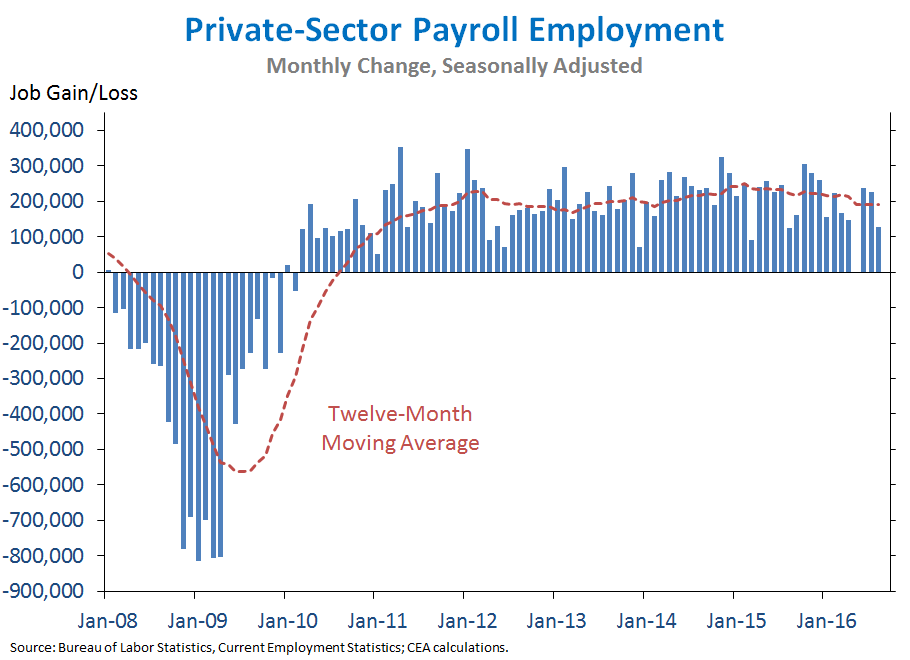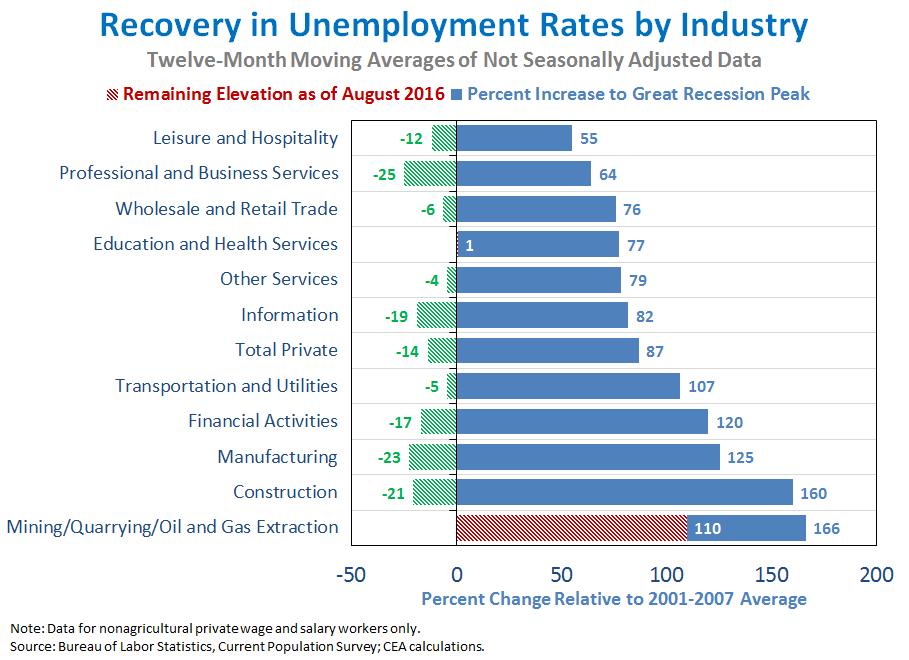By Karen Rubin, News & Photo Features
With Donald Trump continuing to rewrite history, advance falsehoods about Obama’s Presidency, it is important to examine the Employment report for November. Trumpsters depend upon disaffection and dissatisfaction. A strong economy is the antithesis. Also, Trump wants to take credit as the forward momentum of Obama’s policies continue on into the new administration, before the administration’s policies, undoing everything Obama accomplished, have their impact.
Trump was able to exploit years of propaganda from the Republicans aimed at destroying his presidency. Obama found a way to thread the needle in coming up with solutions, despite unprecedented obstruction of infrastructure spending, the America Jobs Act, spending for transportation and highways, defeating his plans to build high-speed rail and invest in clean, renewable energy.
Obama was almost a victim of his own success – like President Bill Clinton before him, who presided over a golden era of peace and prosperity, when everyone’s income and standard of living rose, only to see Al Gore denied the presidency – people take for granted how much better they are off from when Obama took office, when 850,000 jobs a month were being lost, 20,000 people a month were losing their health care, millions were losing their homes to foreclosure.
Obama also had in place programs to help the people who found themselves unable to pursue the 5.5 million unfilled jobs because of lack of training. He had programs to boost advanced manufacture, and open up markets to the 95% of the world that is outside the US.
Trump is profiting from being handed a growing economy, and he has signaled he will install the very same people who profited from millions of Americans misery, he will undo the financial and consumer protections, he will throw people back into the insecurity of losing health insurance and jobs and homes. He has shown in his appointments and in his business record that he will exploit workers and further weaken unions.
Statement on the Employment Situation in November
WASHINGTON, DC – Jason Furman, Chairman of the Council of Economic Advisers, issued the following statement today on the employment situation in November.
Summary: The economy added 178,000 jobs in November, extending the longest streak of total job growth on record, as the unemployment rate fell to 4.6 percent.
The economy added a solid 178,000 jobs in November as the longest streak of total job growth on record continued. U.S. businesses have now added 15.6 million jobs since early 2010. The unemployment rate fell to 4.6 percent in November, its lowest level since August 2007, and the broadest measure of underemployment fell for the second month in a row. Average hourly earnings for private employees have increased at an annual rate of 2.7 percent so far in 2016, faster than the pace of inflation. Nevertheless, more work remains to ensure that the benefits of the recovery are broadly shared, including opening new markets to U.S. exports; taking steps to spur competition to benefit consumers, workers, and entrepreneurs; and raising the minimum wage.
FIVE KEY POINTS ON THE LABOR MARKET IN NOVEMBER 2016
1. U.S. businesses have now added 15.6 million jobs since private-sector job growth turned positive in early 2010. Today, we learned that private employment rose by 156,000 jobs in November. Total nonfarm employment rose by 178,000 jobs, in line with the monthly average for 2016 so far and substantially higher than the pace of about 80,000 jobs per month that CEA estimates is necessary to maintain a low and stable unemployment rate given the impact of demographic trends on labor force participation.
In November, the unemployment rate fell to 4.6 percent, its lowest level since August 2007. The labor force participation rate ticked down, though it is largely unchanged over the last three years (see point 3 below). The U-6 rate, the broadest official measure of labor underutilization fell 0.2 percentage point for the second month in a row in part due to a reduction in the number of employees working part-time for economic reasons. (The U-6 rate is the only official measure of underutilization that has not already fallen below its pre-recession average.) So far in 2016, nominal hourly earnings for private-sector workers have increased at an annual rate of 2.7 percent, faster than the pace of inflation (1.6 percent as of October, the most recent data available).

2. New CEA analysis finds that State minimum wage increases since 2013 contributed to substantial wage increases for workers in low-wage jobs, with no discernible impact on employment. In his 2013 State of the Union address, President Obama called on Congress to raise the Federal minimum wage, which has remained at $7.25 an hour since 2009. Even as Congress has failed to act, 18 States and the District of Columbia—along with dozens of local government jurisdictions—have answered the President’s call to action and have raised their minimum wages. (In addition to the States that have already raised their minimum wages, voters in four States approved measures to raise the minimum wage in November.) To assess the impact of minimum wage increases implemented by States in recent years, CEA analyzed data from the payroll survey for workers in the leisure and hospitality industry—a group who tend to earn lower wages than those in other major industry groups and thus are most likely to be affected by changes in the minimum wage. As the chart below shows, hourly earnings grew substantially faster for leisure and hospitality workers in States that raised their minimum wages than in States that did not. By comparing trends in wage growth for the two groups, CEA estimates that increases in the minimum wage led to an increase of roughly 6.6 percent in average wages for these workers. At the same time—consistent with a large body of economic research that has tended to find little or no impact of past minimum wage increases on employment—leisure and hospitality employment followed virtually identical trends in States that did and did not raise their minimum wage since 2013. (See here for more details on CEA’s analysis.)


3. The strengthening labor market is drawing individuals into the labor force, offsetting downward pressure on employment growth from the aging of the population. Employment growth depends on three factors: population growth, the rate at which the population participates in the labor force, and the share of the labor force that is employed. The chart below decomposes employment growth (from the household survey) into contributions from each of these factors for each year of the current recovery. It further decomposes labor force participation into shifts attributable to demographics (such as the aging of the U.S. population) and shifts attributable to other factors (such as the business cycle). Throughout the recovery, demographic changes in labor force participation—primarily driven by a large increase in retirement by baby boomers that began in 2008—have consistently weighed on employment growth. In recent years, however, non-demographic changes in labor force participation have supported employment growth, as the strengthening of the labor market and increasing real wages have drawn more individuals into the labor force. The entry (or reentry) of workers into the labor force has helped employment growth maintain its recent solid pace even as the unemployment rate has fallen more slowly. These two shifts in labor force participation—demographic and non-demographic—have largely offset one another in recent months, and as a result the overall labor force participation rate has remained broadly stable since the end of 2013.

4. The number of unemployed workers per job opening, an indicator of labor market slack, is near its lowest level prior to the recession. Using data from the household survey and the Job Openings and Labor Turnover Survey, the chart below plots the ratio of unemployed workers to total job openings. In the recession, unemployment rose rapidly while job openings plummeted, sending the ratio of unemployed workers to job openings to a record peak of 6.6 in July 2009. As the unemployment rate has decreased over the course of the recovery, and as job openings have climbed to record highs this year, the ratio of unemployed workers to openings has fallen steeply, standing at 1.4 as of September (the most recent data available for openings). This is close to the ratio’s lowest level in the 2000s expansion, another indicator—in addition to recent increases in real wages—of a strengthening labor market.

5. The distribution of job growth across industries in November diverged from the pattern over the past year. Above-average gains relative to the past year were seen in professional and business services (+49,000, excluding temporary help services), while mining and logging (which includes oil extraction) posted a gain (+2,000) for the second time in recent months amid moderation in oil prices. On the other hand, retail trade (-8,000), information services (-10,000), and financial activities (+6,000) all saw weaker-than-average growth. Slow global growth has continued to weigh on the manufacturing sector, which is more export-oriented than other industries and which posted a loss of 4,000 jobs in November. Across the 17 industries shown below, the correlation between the most recent one-month percent change and the average percent change over the last twelve months was -0.06, the lowest level since September 2012.

As the Administration stresses every month, the monthly employment and unemployment figures can be volatile, and payroll employment estimates can be subject to substantial revision. Therefore, it is important not to read too much into any one monthly report, and it is informative to consider each report in the context of other data as they become available.



